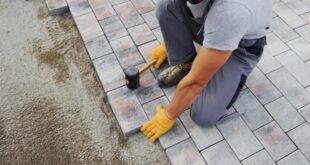A critical factor in the design of an industrial structure is the roof design, and the roofing material. Making the choice is dependent on whether the building is designed with a flat or sloped roof, and the load bearing capacity of the building. The roofs of industrial buildings often cover massive areas, and the type of roofing material used will have a large impact on the building budget, as well as the ongoing costs and maintenance. Here are some of the most common Industrial roofing materials.
- Metal Roofing: For sloped roofs, metal roofing comes with a lot of advantages. It is not only attractive, but it is durable, fire resistant, easy to install, long lasting and recyclable. This material has advanced a lot in recent years and it is a common feature of industrial roofing in Perth. Part of its appeal is that company colours and design themes can be represented in the actual material of the roofing, which provides a professional appeal.
- Built-up Roofing: The built-up roofing technique is likely the most popular choice for flat roofs. Considering that most industrial property is low and wide, there are a lot of flat roofs in commercial areas. Built-up roofing is created with layers of tar lined textiles that are topped by a layer of fine gravel. Built-up roofing is waterproof and good for wide areas, but it is a heavy material, and it does require some maintenance as it ages.
- Shingles: Shingles are very common in residential building, but not as much in Industrial settings. Shingle’s main advantage is that they can be used on nearly any slope, and the asphalt version is not difficult to install or replace. The wood or stone versions are very long lived, but are harder to install and can be expensive. It is however a very attractive option.
- Single-ply Membrane Roofing: Single ply membrane roofing can be used on either a sloped roof or a flat roof. It is essentially a waterproof seal over the existing roof structure. It is formed by rolling out sheets of rubber or similar material, and then they are sealed together, and the sheeting is bonded to the roof.
All four of these options have been in use for a long time and they all have advantages and disadvantages. It is good to consult with your architect early to discuss what material they had envisioned during the design process. You should also consult a roofing expert to get a second opinion. Roofing material is something you absolutely must get right.
When you’re in need of a new roof, trust the experts at Summit Renovation. We provide full-service roofing solutions, including insurance claims assistance, experience with many roofing materials, and quality roofing services!
 Brand Green House – Advice on Choosing Professional Electrician
Brand Green House – Advice on Choosing Professional Electrician





